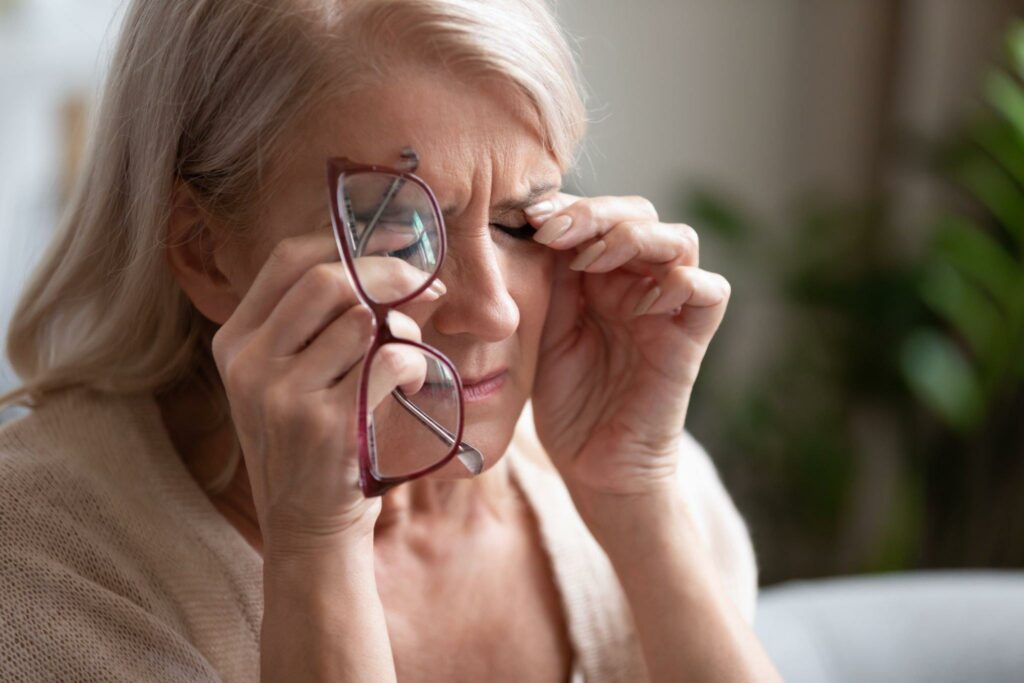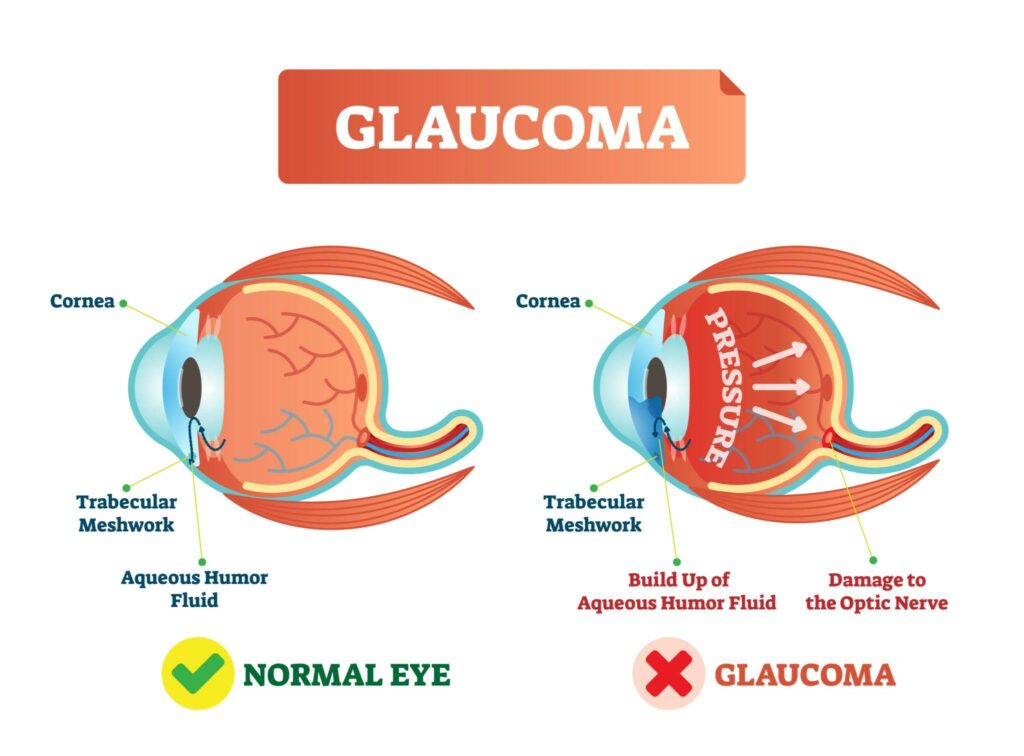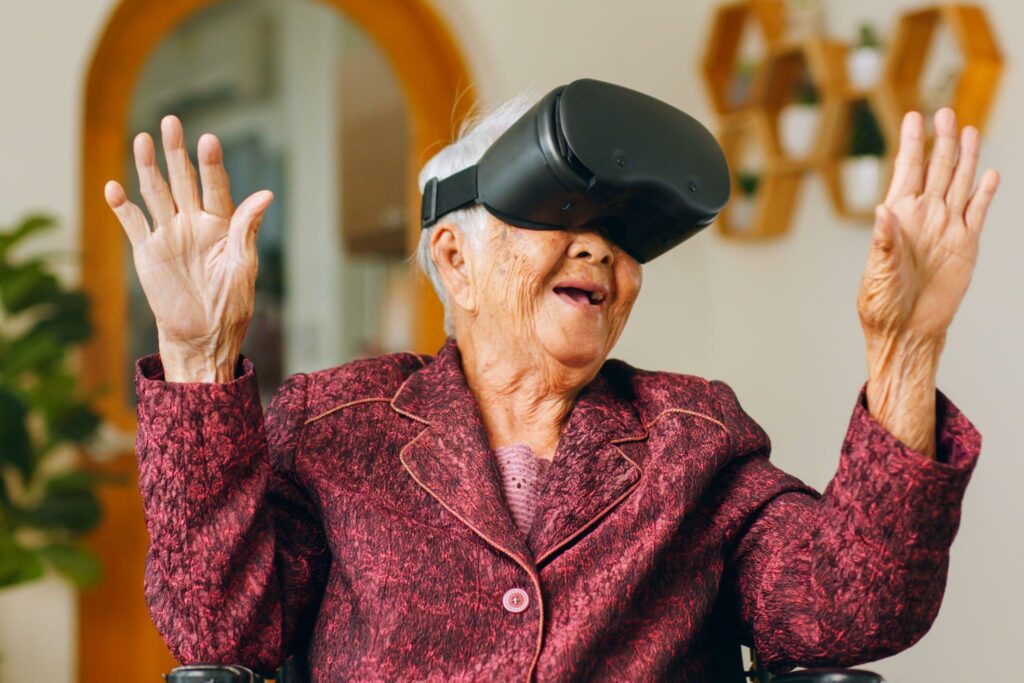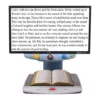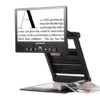Glasses that Treat Glaucoma
Glaucoma treatment’s mainstay is the long-term use of eye drops to reduce intraocular pressure. When eye drops are no longer effective, physicians may occasionally perform surgery or employ laser therapy to further reduce eye pressure. Getting eye drops into the eyes can be quite challenging for many people, especially those who have chronic diseases like Parkinson’s disease or arthritis. Glaucoma often manifests in later life. Alternative surgical procedures might come with serious hazards. A startup called Bionode is working to cure glaucoma with special glasses that work in tandem with contact lenses. This noninvasive approach might possibly relieve a patient from having to use eye drops every day, without the negative effects of medicine or the risks of surgery. Imagine being able to manage your glaucoma with only a pair of contact lenses and specialized glasses!
The new glasses are used in conjunction with a contact lens that has a gold-trace ring, according to Dr. Pedro Irazoqui, Ph.D., a professor of electrical, computer, and biomedical engineering at Purdue and one of the main researchers working with Bionode. These eyewear items create a magnetic field, which causes a current to flow through the contact lens. The muscles around the region where the aqueous fluid leaves the eye are electrically stimulated by the current that passes through the eye. The procedure makes it possible for the natural drainage system of the eye to function more effectively, which lowers ocular pressure. As of yet, no negative effects have been reported. However, the research is still in its early stages, and additional details are still needed before the general public may get this treatment.
Even if they are currently unavailable, it is crucial that glaucoma patients have the right eyeglasses. Patients who may only have one functioning eye may benefit from wearing glasses. Polycarbonate lenses can provide better protection under these circumstances. Reduced contrast and trouble switching between bright and dark conditions are common glaucoma symptoms. In strong lighting, wearing sunglasses or transition lenses may occasionally aid with these changes.
What is glaucoma?
A pressure buildup within the eye called glaucoma causes optic nerve atrophy. Many people don’t notice their eyesight deteriorating until there has been severe vision loss since the effects are so gradual. Preventing glaucoma is one of the key benefits of routine, preventative eye care.
Bright light, computer displays, and the glare of nighttime driving may all be quite painful if you have glaucoma. As a result, you could start looking for glaucoma-specific eyewear to alleviate your light sensitivity and other symptoms.
What Causes Glaucoma?
One of the main causes of central visual field abnormalities, sometimes known as “tunnel vision,” imposes a number of visual restrictions on glaucoma sufferers, including reduced sensitivity to contrast or challenges with glare, trouble adjusting to the dark, reduced night vision, and even difficulties reading.
- Glaucoma, like other illnesses, involves a variety of contributing factors. It could be caused by a blockage in the drainage system of the eye, which keeps the fluid from draining and causes damage to the delicate nerve fibers as a result of the extreme pressure as the fluid builds up.
- Other causes of glaucoma include eye damage, clogged blood vessels inside the eye, inflammatory diseases, and eye infection. Glaucoma can also be caused by a genetic problem or hereditary illness.
- Age also has a significant impact since, compared to younger age groups, those over 40 are significantly more likely to be diagnosed with eye diseases like glaucoma.
- A further crucial factor that has to be taken into account and managed is food consumption. A National Institutes of Health study demonstrates that being overweight or obese increases the risk of glaucomatous damage when intraocular pressure is high. The study also shows the impact of BMI on intraocular pressure.
- Beef, butter pig, and lamb are examples of foods high in saturated fats that should be avoided at all costs. The same is true with a diet heavy in trans fatty acids, which includes foods like cookies, cakes, donuts, and fried foods. These foods are connected to elevated cholesterol levels, which can harm blood vessels in the body and eyes.
Treatment Options for Glaucoma
The first line of defense against glaucoma is routine eye exams; failure to do so might result in irreparable damage or vision loss.
Only use medication on the advice of or after speaking with an ophthalmologist or eye professional.
They could suggest or prescribe specific eye drops to lower eye pressure. The eye doctor may recommend drugs or prescription drugs or tablets that manage the IOP if the problem persists despite the use of eye drops. Poor decision-making can have major negative consequences, such as limiting the flow of fluid into the eye.
Surgery is only recommended as a last resort for treating glaucoma after all other forms of treatment—including eye drops, medicine, and different approaches—have failed.
The two main types of surgical therapy are as follows:
Traditional glaucoma surgery comprises trabeculectomy, drainage implant surgery, and non-penetrating glaucoma surgery (the most common option for traditional glaucoma treatment). Due to the fact that trabeculectomy makes a pathway in the sclera that aids in draining surplus eye fluid, it is successful in treating both open-angle and closed-angle glaucoma.
Laser surgery for glaucoma includes repairing the drainage system in the eye using a high-energy laser beam. The laser beam aids in facilitating a simple drainage pathway for the eye’s aqueous humor, hence reducing IOP. Argon laser trabeculoplasty and selective laser trabeculoplasty are a few typical examples. cycloablation and laser peripheral iridotomy.
What other Glasses are available for Glaucoma?
Your eye doctor can assist you in finding a prescription for a vision that will enhance your vision if you have glaucoma (along with glaucoma medications or even surgery to slow disease progression). But you could also be interested in alternative styles of eyewear to assist you to manage the condition better.
It might be challenging for glaucoma patients to adjust their eyes to various surroundings. Changes in brightness, for instance, might lessen your sensitivity to contrast if you have glaucoma. Because of this, it could be harder for you to focus and to switch from a bright setting to a dark one, or vice versa.
Sunglasses
High-quality sunglasses are essential for glaucoma patients with light sensitivity.
Anyone who is particularly sensitive to sunlight should invest in a nice pair of sunglasses. You may even be tempted to wear sunglasses inside if you have glaucoma and related light sensitivity.
Unfortunately, doing so might eventually cause your eyes to become adapted to the dark and worsen your light sensitivity. So even though it may be comfortable when you put them on, it is not a good idea to wear sunglasses inside.
Blue Light Glasses
Blue light filters may be useful for minimizing exposure to blue light, but can they treat glaucoma?
Blue light filters, also known as blue light glasses or blue light blockers, are supposed to help lessen the potentially detrimental impacts of digital devices like computers, TVs, and cell phones.
There isn’t much proof to back up the claims made by certain people that they benefit. In actuality, blue light spectacles are not recommended by the American Academy of Ophthalmology. Instead, they advise taking regular rests to lessen the strain on your digital eyes.
It won’t hurt to try to filter blue light using these glasses if you’re searching for special glasses for glaucoma patients. Although research is underway, the data thus far is, at best, ambivalent as to whether blue light-blocking glasses are actually beneficial.
Glasses for improved contrast
It is claimed that yellow filter glasses are the best glasses for glaucoma patients, which are frequently sold as “anti-fog” or “safety” glasses at department stores and other retail establishments. They improve contrast sensitivity by enhancing contrast, particularly in poor lighting conditions (such as fog, rain, and dusk). These claims were put to the test using the Vision Contrast Test System (VCTS 6500), first with yellow filter glasses and then without, on 15 healthy volunteers (30 eyes), ranging in age from 26 to 58 (mean 42.5). Commercial anti-fog glasses and hand-held, frame-mounted filter glasses created by an optician in CR (Columbia resin) 39 quality were tested. Yellow filter glasses were shown to considerably increase contrast sensitivity (p less than 0.0001). Patients who report a subjective improvement in contrast sensitivity with such glasses may be safely advised to wear them.
Smart Glasses for Glaucoma
IrisVision
Although low vision aids like electronic magnifiers, hand-held magnifiers, and video magnifiers have been widely utilized by persons with visual impairments, new, creative solutions have been created as a result of the merging of vision research and technology.
For patients with eye disorders including glaucoma, macular degeneration, retinitis pigmentosa, etc., clinically verified, award-winning technology called IrisVision Live uses functional parts of the patient’s eyes to immediately restore and increase visual acuity.
The best smart glasses for those with glaucoma have a 70-degree field of vision and a 14x magnification. Images and visuals are clear and crisp, allowing you to adjust contrast and glare to your personal preferences, which improves the visual experience for glaucoma and vision-impaired patients.
In the wearable headset, some of the most important software lenses are:
Scene Mode
This feature delivers a high-definition view with quick autofocus, a 70° field of view, and up to 14X magnification, making it the perfect choice for work at a distance, in the middle of something, or up close.
Colored Reading Modes
Assists users in selecting the color contrast that is most comfortable for their eyes while reading short-form information such as menus and package directions.
The Bioptic Mode
This feature enables you to zoom in on a particular location without losing the overall context of the image. helpful for long-distance vision tasks like reading signs or locating objects on the top shelf.
IrisReader
IrisReader (Optical Character Recognition) is a useful function that reads aloud to the user after scanning a text. High contrast and a huge text type are used for the presentation.
It also has a broad range of helpful features, such as the ability for users to capture images and save them in IrisVision’s Photo Gallery for later use.
Voice Commands
Make the most of Smart Voice Commands with the help of Amazon Alexa, your very own personal assistant. You may have a hands-free experience by asking Alexa questions like “what’s the weather like?” or “what time is it?” or even just “snap a picture.”
A number of extras are included with the IrisVision Live headset, including headphones, a fast charger, a cable, a carrying bag, training manuals, and a wireless charging pad.
Vision Buddy
The first all-in-one assistive tool in the world, Vision Buddy is made to help people who have low vision go about their daily lives.
- Connect your cable box, streamer, or other provider using the TV Hub to watch your favorite TV shows with improved picture quality.
- Use Computer Link to zoom in on your desktop while wearing the headset, or use the CCTV Mini to read.
- Click a button to enter the camera/magnification mode and view your surroundings. It’s that easy!
With numerous eye disorders including Age-related Macular Degeneration, Glaucoma, and Retinitis Pigmentosa, etc., this ground-breaking gadget has helped the visually impaired population all over the world regain freedom!
View your surroundings, vividly see the faces of those you love, and resume enjoying activities!
- Use the CCTV Mini companion device to read with the ability to zoom in and out, or use the headset’s built-in OCR mode to hear text read aloud from your favorite books, newspapers, and magazines.
- Easily carry out tasks like reading medical labels, running a microwave, and setting the thermostat.
FAQ’s
What eyewear enhances contrast?
Because they boost contrast and make the letters and words stand out more clearly, yellow or light orange lenses are ideal for indoor reading. This allows you to read comfortably.
What colors of lenses are most suitable for light-sensitive eyes?
On a bright, sunny day, choosing a darker lens tint will aid you if your eyes are sensitive to light. One of the most significant types of sunglasses you can get for sensitive eyes is those with dark colors.
Can not wearing glasses cause glaucoma?
When you’re an adult with blurry vision and require glasses, not wearing them really makes your eyes work harder rather than better. Your eyes may work less hard with corrective lenses, which lessens eye strain and all the other negative side effects of not wearing glasses (when you need them). But not wearing them will not cause glaucoma.

